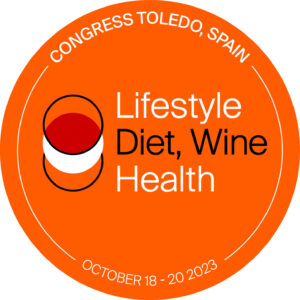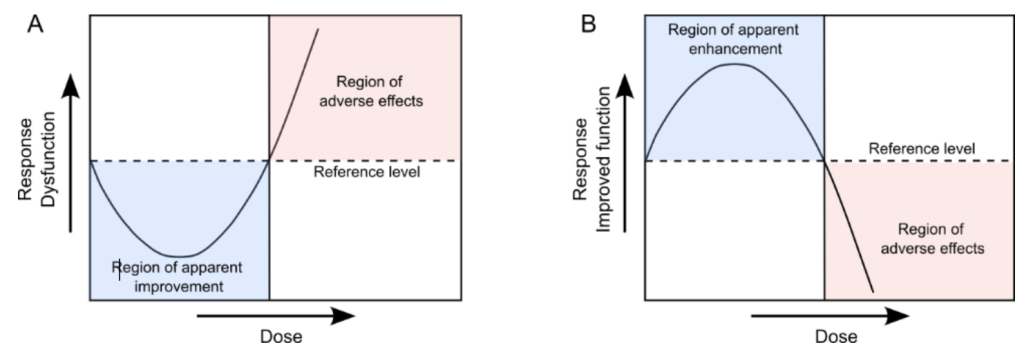I recently had the privilege of attending the INTERNATIONAL SCIENTIFIC CONGRESS on LIFESTYLE, DIET, WINE, & HEALTH (https://www.lifestylewine2023.com), which took place in Toledo, Spain, between October 18th to 20th. The congress provided me with profound insights into the impact of our lifestyle choices on our health. I firmly believe that it is essential to emphasize the importance of effective communication to convey scientific evidence supporting the notion that many health problems can be prevented or mitigated with the right choices and a healthy lifestyle. It is essential to dispel the misconception that a healthy lifestyle means personal sacrifices and increased unhappiness. Such conferences play a pivotal role in allowing scientists in the field to discuss these topics and collectively define strategies for public communication. Representatives from various industries, associations, and governmental institutions attended the event, highlighting the collaborative nature of discussions. During the congress, prominent speakers shared their knowledge, shedding light on diverse aspects related to cardiovascular health, alcohol consumption, and their effects on well-being.

Congress began with a presentation delivered by Professor Ken Mukamal, an eminent professional with an extensive background in the field. Professor Mukamal serves as the Associate Chief for Research in General Medicine at the Beth Israel Deaconess Medical Center, Associate Professor of Medicine at Harvard Medical School, and Department Associate in Nutrition at the Harvard Chan School of Public Health. Professor Mukamal highlighted that alcohol consumption remains a topic of significant interest, uncertainty, and debate globally. National guidelines on alcohol consumption have progressively lowered the acceptable limit of consumption, motivated, in part, by several scientific trends. One of the most noteworthy trends is the synthetic estimation of disability-adjusted life-years (DALYs) lost, both nationally and globally. This methodology incorporates a meta-analytic summary of relative risks related to overall volumes of consumption for individual conditions, as well as the morbidity and mortality of those conditions, and nation-specific reports of alcohol consumption. This method identifies a substantial signal of harm caused by excessive alcohol consumption but provides inconsistent estimates of benefit or harm from limited consumption. However, this approach has various limitations, including sensitivity to the accurate quantification of dose-response relationships, variations in cross-nation baseline rates, selective inclusion of alcohol-sensitive conditions, inaccuracies in ascribed rates of limited and excessive drinking, inability to distinguish between scientific and statistical uncertainty, and failure to consider drinking patterns. As a result, caution should be exercised when interpreting the differences in DALYs due to limited drinking. Despite these limitations, results from 2022 suggest that limited alcohol consumption may result in similar DALYs to abstention among individuals aged 15–39 years, ranging from 0 to 1.75 drinks per day. Among individuals aged 40 years and older, the curve was consistently J-shaped, with safe levels ranging from 0.2 to 7 drinks per day. These findings demonstrate a significant amount of variability, indicating the need for further high-quality evidence on the true health effects of alcohol consumption, preferably from clinical trials, to complement the results of the most advanced modelling.

Given the paramount importance of the topics discussed at this conference, it is our pleasure to announce that two articles will be featured in the upcoming edition of Science & Wine. The subject of today’s article summarizes the lectures on alcohol consumption and cardiovascular health. The lectures presented at the conference provided valuable insights into the complex relationship between alcohol consumption, specifically wine, and mortality, incorporating diverse viewpoints on biological mechanisms, epidemiological data, and innovative approaches to promoting cardiovascular well-being. Professor Curtis Ellison, an esteemed scholar in the field of Preventive Medicine and Epidemiology at Boston University School of Medicine, presented a historical context that highlights the initial scepticism among the medical community and government entities regarding the potential health benefits of alcohol consumption. Researchers from the Framingham Heart Study in the United States prepared a manuscript for publication based on data from the first 24 years of observation of male participants, which included their consumption of alcohol and their risk of mortality from heart disease. The results demonstrated that alcohol consumers had a significantly lower risk of heart disease than non-drinkers. The authors concluded that there were four major “risk factors” for coronary heart disease: cigarette smoking, hypertension, elevated blood cholesterol, and abstinence from alcohol. At that particular moment, the Framingham Study was under the supervision of the National Heart Institute, which necessitated the approval of all manuscripts. Nonetheless, upon examination of the manuscript by the officials, they promptly advised against publication, stating that it should be restricted to only three primary risk factors and exclude all references to alcohol. Given the prevalence of alcohol abuse in this country, it is imperative to acknowledge that alcohol does not prevent coronary heart disease. This event reflects the prevalent attitude of the medical community and government officials at the time, who believed that alcohol consumption was harmful. Some continue to hold this belief today without scientific evidence to support it. There are still individuals who publish warnings about alcohol based on misinterpretation of data, selected studies, or even fraudulent intent, claiming that alcohol consumption is unhealthful. It is widely accepted from scientific research that moderate alcohol consumption has been consistently linked to a decreased risk of coronary artery disease and overall mortality compared to abstaining from alcohol. Studies have identified mechanisms underlying the beneficial effects of moderate alcohol consumption, including regular consumption of light to moderate amounts of an alcoholic beverage, avoidance of binge-drinking, and consumption of alcohol with food. Moreover, drinking with other healthy lifestyle choices, such as a Mediterranean-type diet, no smoking, adequate exercise, and avoiding obesity, can have a positive impact on beneficial outcomes. According to current scientific data, moderate alcohol consumption plays a significant role in the prevention of coronary heart disease and mortality. The claims of health dangers from any level of alcohol consumption are not supported by sound scientific evidence, and exaggerate the risks associated with moderate drinking.
Mladen Boban, a researcher from the Department of Basic and Clinical Pharmacology at the University of Split School of Medicine in Split, Croatia, conducted an in-depth examination of the molecular and physiological effects of alcohol, with a particular focus on the hormetic dose-response relationship. In molecular pharmacology and human nutrition, it has been observed that different compounds exhibit opposing effects as a function of dosage, a phenomenon known as hormesis. This biological concept has broad biomedical implications and is described as an inverted U-shaped or J-shaped dose-response. The shape of the dose response is determined by the measured endpoint, with an inverted U-shape observed for growth or viability and a J-shape for disease incidence or mortality risk. In the context of human nutrition, the hormetic biphasic effects of alcohol consumption on human health have been extensively studied, and the majority of epidemiological studies have consistently demonstrated a J-shaped dose-response association with different diseases and total mortality. In the case of wine, two principal constituents, alcohol and phenolic compounds, are considered responsible for most of its biological effects. Examples from in vivo and in vitro experimental studies will be used to demonstrate that the J-shaped shape is responsible for most of its biological effects.

Giovanni de Gaetano, from the Department of Epidemiology and Prevention at IRCCS NEUROMED in Pozzilli, Italy, presented compelling evidence from cohort studies that highlighted the intricate interplay between moderate wine consumption, sociodemographic factors, and health outcomes. Using data from the Moli-sani cohort, which comprised 20,682 apparently healthy Italian adults, moderate alcohol consumption (1-12 g/day) was found to significantly reduce the global hospitalisation burden. Heavier drinkers (> 48 g/day), particularly those who smoked, had a higher rate of hospitalisation for all causes, including alcohol-related diseases and cancer. By aggregating data from 16 cohorts, comprising 15 from Europe, and encompassing a total of 142,960 individuals, with a mean age of 50 to 13 years and 53.9% being male, it was discovered that moderate alcohol consumption (less than 10 g/day) was associated with a reduction in the risk of total or cardiovascular mortality in comparison to lifetime abstainers. Specifically, drinking up to 10 g/day was associated with an 11% reduction in the risk of mortality, whereas intake above 20 g/day was associated with a 13% increase. Alcohol intake of 10-20 g/day was not associated with cancer mortality risk reduction or increase but was associated with a 22% increase in the risk of mortality due to alcohol-related causes. Furthermore, using data from the MORGAM Project, it was found that moderate alcohol consumption was associated with a lower rate of death in individuals with higher levels of education than in lifetime abstainers. Conversely, heavy drinkers had a higher death rate among individuals with lower levels of education. The association between alcohol consumption and mortality risk showed a J-shape by level of education and was more evident in individuals who preferred wine. In contrast to the beneficial effect on heart failure, moderate habitual alcohol intake of 1.2 drinks/day was associated with an increased risk of atrial fibrillation in the MORGAM Project cohort of 107,845 individuals.

Cardiovascular disease, wine, and thrombosis were the topics discussed by Francesco Violi of Sapienza University of Rome in Rome, Italy. Atherosclerosis, a condition caused by the oxidation of low-density lipoproteins (LDL), leads to inflammation and infiltration of monocytes into the arterial wall. These cells engulfed the arterial subintima upon transforming into macrophage-derived foam cells. NOX2, which plays a role in the production of reactive oxidant species (ROS), is involved in atherosclerosis. Patients with chronic granulomatous disease (CGD), who are NOX2-deficient, have a reduced atherosclerotic burden. Antioxidants, such as vitamin E, can reduce macrophages in the arterial wall. Wine may also have a role in reducing atherosclerotic burden by interfering with platelet activation. This may provide biological plausibility for observational studies that have shown moderate wine consumption to be associated with a lower risk of cardiovascular disease without an increase in mortality. However, it is important to note that the alcohol content of wines can have detrimental effects on the cardiovascular system. Although there are no randomised clinical trials to support the idea that wine can prevent cardiovascular disease, the polyphenol content of wine may be a useful tool in the development of new anti-atherothrombotic agents.
Ms. Randi Foraker of the Department of Nutrition, Epidemiology, and Biostatistics at Texas A&M University, College Station, Texas, USA, talked about her contribution to a paradigm shift in the American Heart Association’s approach to cardiovascular health. The focus has shifted from solely treating diseases to promoting health across the lifespan. The definition and measurement of the original Life Simple 7 metrics have been reevaluated for their responsiveness to inter- and intra-individual variation, and new metrics have been considered. The importance of the social determinants of health and psychological health as crucial factors in optimising and preserving cardiovascular health has been addressed. The enhanced approach, called Life’s Essential 8, includes components such as diet (updated), physical activity, nicotine exposure (updated), sleep health (new), body mass index, blood lipids (updated), blood glucose (updated), and blood pressure. Each submetric now has a scoring algorithm ranging from 0 to 100 points, allowing for the generation of a new composite cardiovascular health score (the unweighted average of all components), ranging from 0 to 100 points. The implementation of cardiovascular health assessment and longitudinal monitoring are discussed, as well as potential data sources and tools for widespread adoption in policy, public health, clinical, institutional, and community settings.

